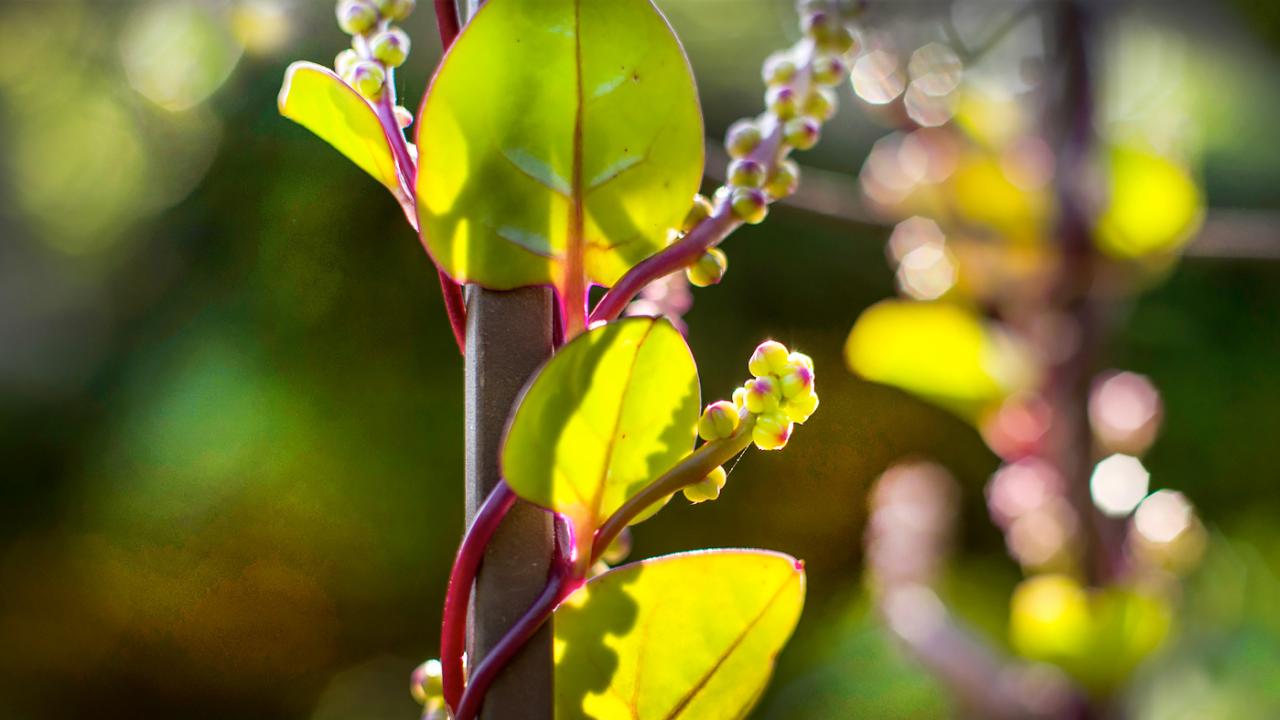

Plants & Gardening
Garden Stories
Desert Island Herbs
In case you missed it, the International Herb Association has named tarragon the herb of the year. “What?” you might be thinking. “What about basil?”

Discover a world of uses for your herb harvest—essential and flavored oils, vinegars, jams and jellies—at Herb Garden Weekend.
Sure, tarragon (Artemisia dracunculus) has silvery leaves and an anise-like flavor, but basil is the king of herbs, beloved by all. It’s such a crowd-pleaser that we’re giving away Napoletano Bolloso basil seedlings during Herb Garden Weekend, and the rest of the month as well.
Perhaps it’s time to rethink tarragon and the diverse palette of herbs available to modern cooks. The late author and farmer Noël Richardson once wrote, “If we could take only one herb to grow on a desert island, it would be difficult to choose between basil and tarragon.”
How about you? What (culinary) herb would you choose? We put the desert island question to staff at the Chicago Botanic Garden and received colorful, informed, and surprising answers.

Italian basil—and other basil cultivars and species—find their way into the cuisine of many nations.
“Wilson! I’m sorry!”
Basil, it turns out, not only tastes delicious, but might also help deal with the many stresses of island life. Gabriela Rocha Alvarez, plant labeling technician, notes that basil repels insects, has antibacterial and antifungal properties, and could help her keep calm while she’s waiting to be rescued. She would pick the varieties Ocimum basilicum and O. tenuiflorum. “These types of basil need warmth and full sun, and self-seed.”
Sophia Shaw, president and CEO of the Garden, says, “Hands down, basil.” She uses dried and whole fresh leaf basil, and pesto. “I hope my island also has tomatoes and garlic!”
Survivor: Desert Island
Inspired by the practices of many coastal societies, Boyce Tankersley, director of living plant documentation, would choose dill (Anethum graveolens). Besides going well with all types of fish and seafood, it’s also a good source of vitamins C and A, and the minerals manganese, iron, and calcium, he says, and the monoterpenes and flavonoids—antioxidants and chemoprotectors—help neutralize the carcinogens found in smoke. “I do love smoked fish,” says Tankersley. “Please let there be driftwood available!”

Beautiful in bloom, dill is delicious as a fresh herb, or use the seeds as part of a pickle.
Dill is also known to help soothe upset stomachs and relieve insomnia. “Although the sound of waves on a sandy beach normally puts me to sleep—I might be a bit stressed if marooned. And dill’s volatile oils have antibacterial properties that could come in handy,” says Tankersley, “if I get injured and need to dress a wound.”
The savory herb also wins a vote from Lisa Hilgenberg, horticulturist at the Regenstein Fruit & Vegetable Garden, who likes dill for both its flavor and growing habits. “It’s my favorite tasting herb, especially with fish, which I suppose would be a staple of my diet,” she says. “It is a self-sowing annual so I could save seed and grow it again the following year if I hadn’t been rescued.”

A Mediterranean standard, don’t underestimate parsley—it’s more than a garnish!
It will get stuck in your teeth!
Parsley is the choice of horticulturist Ayse Pogue, who says it reminds her of growing up in Istanbul. “We have many dishes where we mix parsley and feta cheese—pastries, breads, and salads. We also sprinkle it on cold dishes cooked with olive oil and served with parsley and lemon juice.” One such favorite is barbunya.
Pogue appears to have chosen wisely. Parsley is also packed with nutrition—and is used as a natural breath freshener.
I’d Have the Thyme
Versatility—and a pleasing bloom—makes thyme the herb of choice for Celeste Vandermey, supervisor of plant records. “Thyme adds flavor and aroma to any soup or stew. It is easy to grow and creeps along the ground, producing beautiful little spikes of pink or white flowers,” she says.

A refreshing digestive, mint can be harvested more than once in a season; use it fresh in your mojito, or dried as tea.
Mojitos, Mint Juleps, and More
Many refreshing drinks—think iced tea, mojitos, and mint juleps—get some of their cool from mint, the herb of choice of Laura Erickson, coordinator of market sales for our Windy City Harvest Youth Program. “Hopefully, I could bring a hammock and a few good books along, too.”
Herbes de Provence
What about cilantro, chives, rosemary, and sage? What about herbes de Provence, a mixture favored by the French? If you’re interested in learning more about these and other flavorful, nutritious, and potentially beneficial herbs, come to our Herb Garden Weekend, in the Regenstein Fruit & Vegetable Garden.

